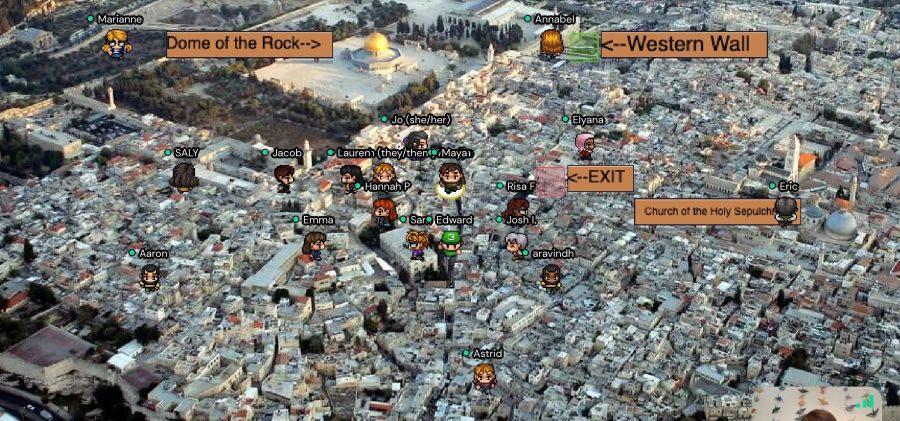What do sacred places look like? What makes a place sacred? And can places be sacred to individuals, or do they need—in the words of Carleton’s Chaplain Carolyn Fure-Slocum—“some roots that are deeper and longer than ourselves?” These are some of the questions students pondered at last Sunday’s “Pilgrimage Progressive,” an interfaith event that students organized through the web-conferencing software Gathertown.
At the event, student presenters brought attendees around the world to sacred sites in their religious traditions. Students’ insights ranged from stories about making pilgrimages to the Western Wall in Jerusalem to reflections on how the more-than-2,000-year-old ruins in Bodh Gaya, India demonstrate the impermanence of life. Students also identified sacred sites on and near Carleton’s campus, such as the Hindu Temple of Minnesota north of the Twin Cities and the Druid Circle in the Arboretum.
The creatively-crafted online event built off of the Chapel’s custom of hosting at least one interfaith gathering each term, in addition to a bi-weekly interfaith discussion group.
The Chapel has a long history of supporting interfaith life in addition to supporting student groups for individual religions. In fact, “Carleton was engaged earlier in interfaith dialogue and activities than most other similar colleges,” said Fure-Slocum. “The Council for Religious Understanding, our bi-weekly interfaith dialogue group, was started sometime in the 1970’s or 80’s by Chaplain David Maitland and has continued ever since.”
She added that with the growth of religious diversity on campus over the years, “interfaith dialogue and interfaith activities have deepened and increased.”
Along with four Chaplains, Carleton employs a number of student Chaplain’s Associates (CAs) to cultivate spiritual life and enhance religious diversity on campus. As Ayaka Moriyama ’22, a current CA, explained, “All of us attempt to support each religion, not just for the service of our own religion.”
Amelia Broman ’21, another CA who helped organize the Pilgrimage Progressive with Moriyama, said this is something that makes Carleton unique.
“[At Carleton,] there’s a really interesting degree of trying to foster interfaith dialogue and trying to incorporate perspectives from religious groups on campus that might be a lot smaller or less well-represented—I think that’s definitely a big strength of the office,” Broman said.
Interfaith dialogue is valuable because it gives students the opportunity to learn about other belief systems through personal interactions, Moriyama said. While other belief systems can sometimes seem strange at first, getting to know students of other faiths has enhanced her understanding of others’ faith-based practices.
And interfaith understanding—or lack thereof— has real consequences, from the repeated destruction throughout history of the Jewish holy temple of which the Western Wall is a part to the mass shooting that took the lives of four members of the Sikh community in Indianapolis two weeks ago.
Interfaith understanding has real benefits, too. “Interfaith dialogue and learning, like other forms of intergroup dialogue, are really valuable because we can learn to see through another person’s eyes, which is the beginning of wisdom,” said Fure-Slocum. “That doesn’t mean we change our beliefs, but we can be open to learning from people different from ourselves, which can deepen our own understandings.”












